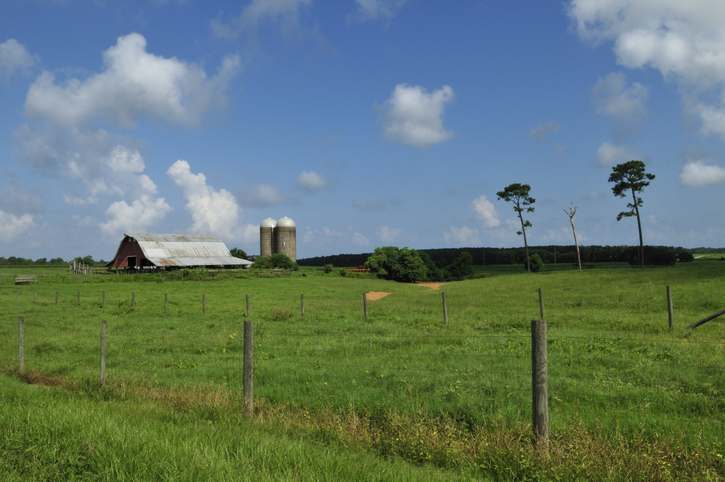
The Yellowhammer State boasts of a productive and diverse agricultural industry. Approximately 39,700 farm operations are spread out across 8.5 million acres of land, according to the latest figures from the USDA’s National Agricultural Statistics Service. Agriculture jobs in Alabama total more than 500,000 and contribute $70 billion to the state’s economy.
Agriculture in Alabama has come a long way since the mid-19th century, when cotton dominated as the primary local produce. The following are now the top commodities that the state produces:
Broilers and eggs
Poultry, specifically broilers or chickens raised for meat, represents the state’s top agricultural commodity. The NASS reported an estimated total of 1.124 billion heads of chicken produced in Alabama in 2018.
As a result, Alabama is also a top producer of chicken eggs. Approximately 2.14 billion eggs resulted in production value of over $400.7 million, based on 2014 estimates from the NASS.
Alabama is currently the third most prolific poultry producing state in the United States. Its contributions significantly add to the country’s world-leading poultry production industry.
Livestock
Southern comfort food will not be the same without Alabama’s top-ranked livestock production. The state’s prolific cattle and hog farms make sure that there’s plenty of quality meat to go around.
Cattle production represents a $2.5 billion industry in the state, with cattle farmers accounting for $500 million in revenue last year.
The Alabama Agricultural Statistics Service lists an inventory of 1.34 million heads of cattle (including calves) in Alabama as of January 1, 2019. This shows a 3% increase in the total heads of cattle (approximately 40,000 more) since the previous year.
Meanwhile, hog production in Alabama amounts to approximately 100,000 heads of swine every year. The state earned $35 million from pork production in 2014.
Peanuts
Alabama ranks third overall in the United States when it comes to peanut production. In fact, peanuts are such an important local commodity that the city of Dothan hosts the largest annual festival dedicated to the legume – the National Peanut Festival held every November.
A total of 165,000 acres of Alabama land are used to grow peanuts. From 162,000 harvested acres, the state produced 550.8 billion pounds of peanuts in 2018, contributing a production value of $118.4 million.
Cotton
Cotton has been on of Alabama’s primary agricultural products throughout its history. Today it still occupies the most land in the state, with 510,000 planted acres. Of the state’s 67 counties, at least 59 are growing cotton.
In 2018, Alabama produced 888,000 480-pound bales of cotton lint, equivalent to more than $307 billion in production value. These farms also produced 254,000 tons of cottonseed, adding $29.6 million in revenue. With this much production, Alabama consistently ranks among the top ten cotton-producing states in the US every year.
Corn
Utilizing 260,000 acres of land, corn production added $159.9 million to Alabama’s 2018 total revenue. In a country that produces more than a third of the world’s corn, the Yellowhammer State contributes around 40 million bushels of corn grain annually.
The state’s corn production also helps sustain other agricultural operations such as livestock. In 2018, Alabama corn growers produced 80,000 tons of silage or fodder, which are typically used as animal feed during the winter months.
Soybeans
Soybean production in Alabama covers 345,000 acres, resulting in $123.4 billion in production value out of 13.9 million bushels produced in 2018. Soybeans and soybean products such as oil and soybean meal are typically exported to countries like Colombia, Korea, and Panama. Soybeans are also used to produce biodiesel.
Wheat
More than 7.9 million bushels of wheat crop were produced in Alabama in 2018, generating $40.4 million in production value. Wheat farms cover 160,000 acres of state land.
Aquaculture
Agriculture in Alabama is not just limited to land-based operations. Aquaculture – especially channel catfish production – also has an important presence in the state’s total production. Alabama is ranked number two in freshwater fish sales across the country, second only to Mississippi.
In 2016, Alabama had 85 catfish farms across more than 17,000 acres of water. This produced 120 million pounds of product – equivalent to 33% of all catfish production in the United States. This output earned the state $130 in production value.
Bonus: Agritourism
An emerging trend in Alabama’s agricultural scene is the increasing popularity of agritourism operations. Among the best known in the state are Lazenby Farms in Auburn, which focuses on row crop production, and Ozan Winery and Vineyard in Calera.
In farms like these, regular production is combined with tourist-friendly entertainment and educational opportunities, where guests can try different hands-on activities like picking peanuts or cotton, hopping on wagons and tractors, and more. These operations also serve as distinctive outdoor venues for special events like weddings and corporate functions.
Other lucrative opportunities that agritourism offers include agriculture-related gifts and craft sales, overnight accommodations, and various outdoor activities like camping and horseback riding.
Interested in owning and operating an organic farm in Alabama? Contact Bill Mackey Real Estate to learn more about top-rated professional real estate services that can help you achieve your agricultural investment goals. Call 334.289.8470 or email bill(at)billmackey(dotted)com today.
